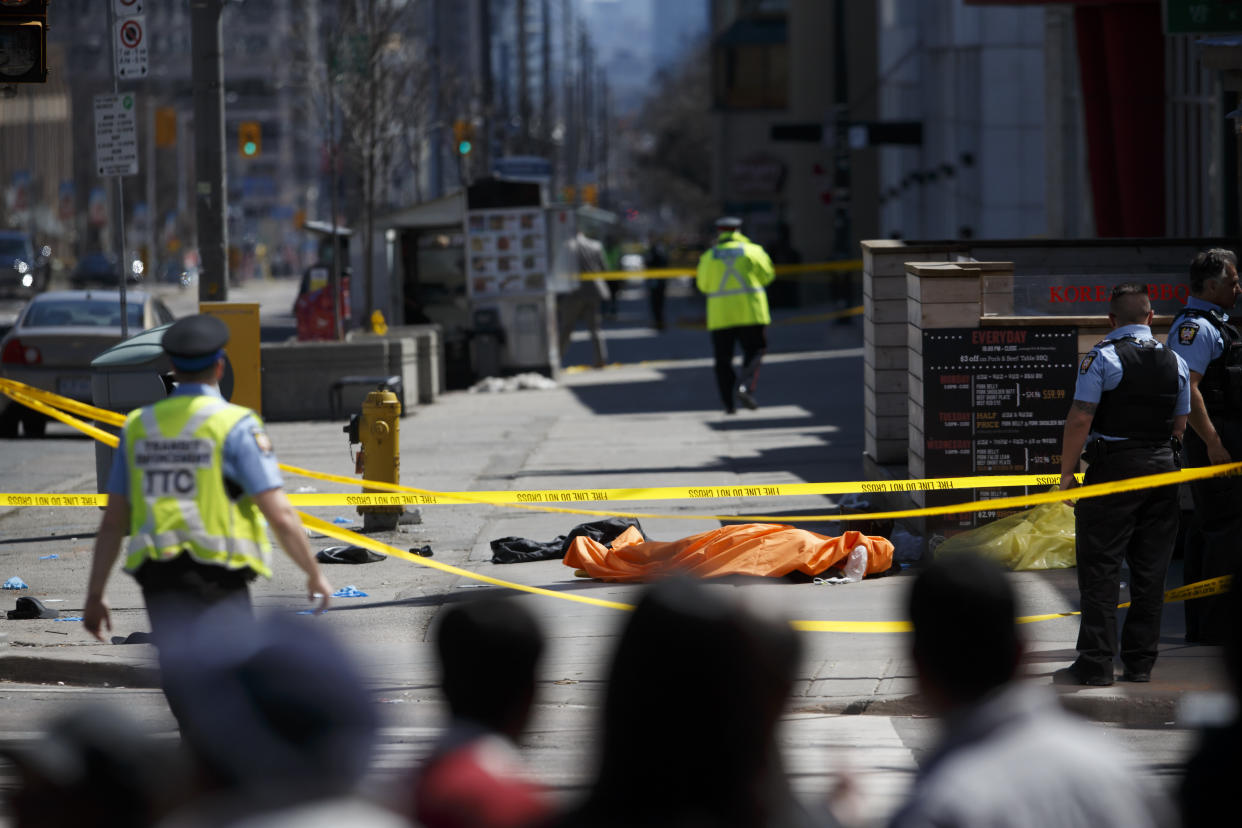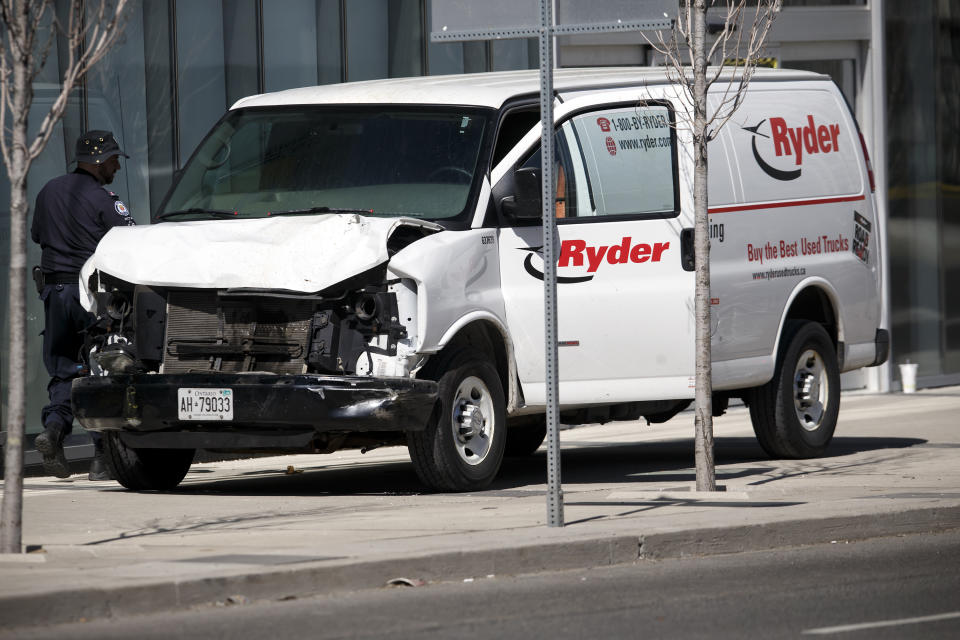Who cleans up after crime scenes like the Toronto attack? It's not an easy job

How many times have you watched television and seen this scenario?
A crime has just been committed in someone’s home — or in public, on the street. Police arrive to discover a murder that involved a firearm — or perhaps a killing involving a different weapon. Investigators immediately get to work, testing matter at the scene, checking for fingerprints, and looking for other forms of material that contains DNA, such as hair, fingernails or body fluids in an effort to discover the perpetrator’s identity.
Meanwhile, the body is moved out of the house or the area on a stretcher as the victim’s family sob and comfort each other.
Skip ahead just seconds or minutes, and the gore has been completely cleaned up. While those who those who have experienced it are obviously still traumatized, the scene looks like nothing out of the ordinary ever happened there. It is pristine, and the surfaces shine.
So, who cleans it up? Not the police. And what about when it’s a crime that takes place in public, and has multiple victims? On April 23, 10 people were killed and 14 others were injured in the Toronto van attack. Alek Minassian, 25, faces 10 charges of first-degree murder and 16 charges of attempted murder in connection with the incident.
So, how does an attack on that scale complicate a cleanup?
Mark Pugash, Director of Corporate Communications for the Toronto Police Service, told Yahoo Canada News since the van attack took place on public property, cleanup was handled by the City, and the police were not involved. Pugash says when a crime takes place on private property, the responsibility for cleanup would fall to the property owner.
Wynna Brown, Manager of Media Relations and Issues Management for the City of Toronto, told Yahoo Canada News that a combination of contracted and city services handled restoration of Yonge Street following the attack.
Van attack poses different crime scene challenge
So, what does cleaning up a crime scene involve? One the police release the area, crews come in and begin the work in cleaning it up, says Christian Cadieux of Crime & Trauma Scene Cleaners. He says the first job is to survey the scene and determine what needs to be done.
Every crime comes with different variables, says Cadieux. But he says the first concern is assessing “the threat to human life” posed by the incident. Crime scene cleaning crews typically work with protective equipment such as masks and Tyvek suits with hoodies to ensure their mucus membranes, eyes, ears, noses, mouths, and skin are protected, Cadieux says.

After surveying the scene and coming up with a game plan, Cadieux says the crew then tests any bodily fluids left behind for pathogens. He says the area is then decontaminated by removing all fluids, then sterilized, and additional testing is done after to determine no traces of bacteria or other harmful pathogens are left behind.
When it comes to an attack such as the Toronto van attack, there may be additional complications with regards to the cleanup, he says.
“Working outside around the clock with a whole crew, that could be anywhere from four or five days to upwards of 10 days, depending on how far the investigation was involved or the amount of time and detail that was spent on the area,” he says.
Cadieux says cleaners must also be mindful of substances that may also have been left in the area from a police investigation. He points out most people tend to forget that crime scenes are divided into two stages: the incident and the investigation. He says the latter also leaves things behind that have to be cleaned up for the public’s safety.
“Make no mistake, forensic chemicals are also equally as toxic and lethal to be surrounded by,” Cadieux says. “There’s other products that they use that are known and listed and regulated substances as in accordance with the ministry of the environment.”

A vehicle being involved could also change the cleanup, he says.
“When a homicide or a suicide takes place with a firearm, depending on the velocity of the weapon that’s used, the trajectory of the contamination can be massive,” Cadieux says. “It can be huge.
“In this particular circumstance or situation, the projection of the bio-hazardous contamination could have gone perhaps up into trees, it could have gone up onto the walls of certain buildings. That would have to be taken into account and consideration. So there’s so much that is involved with a scenario like this because it’s an uncontrolled environment.”


